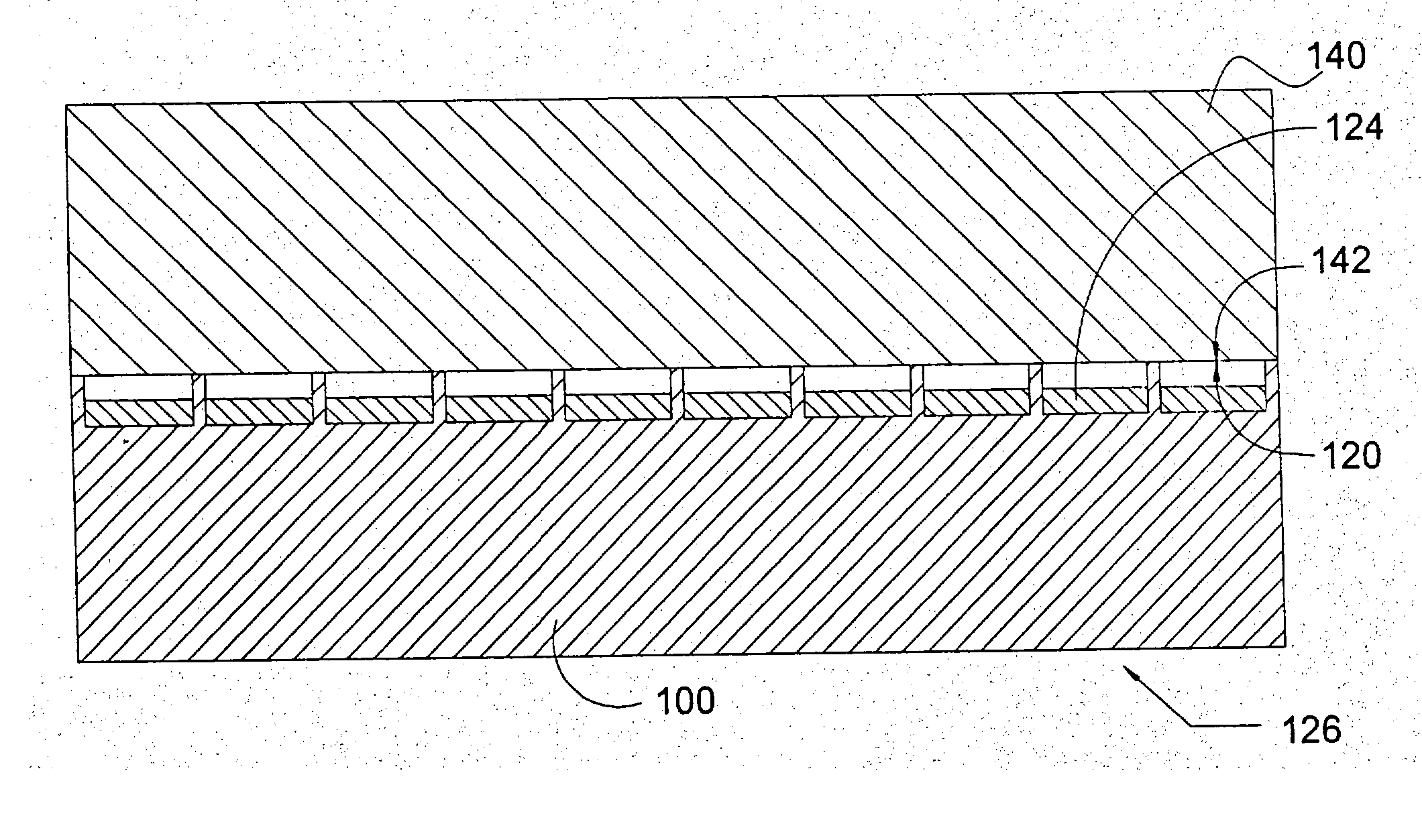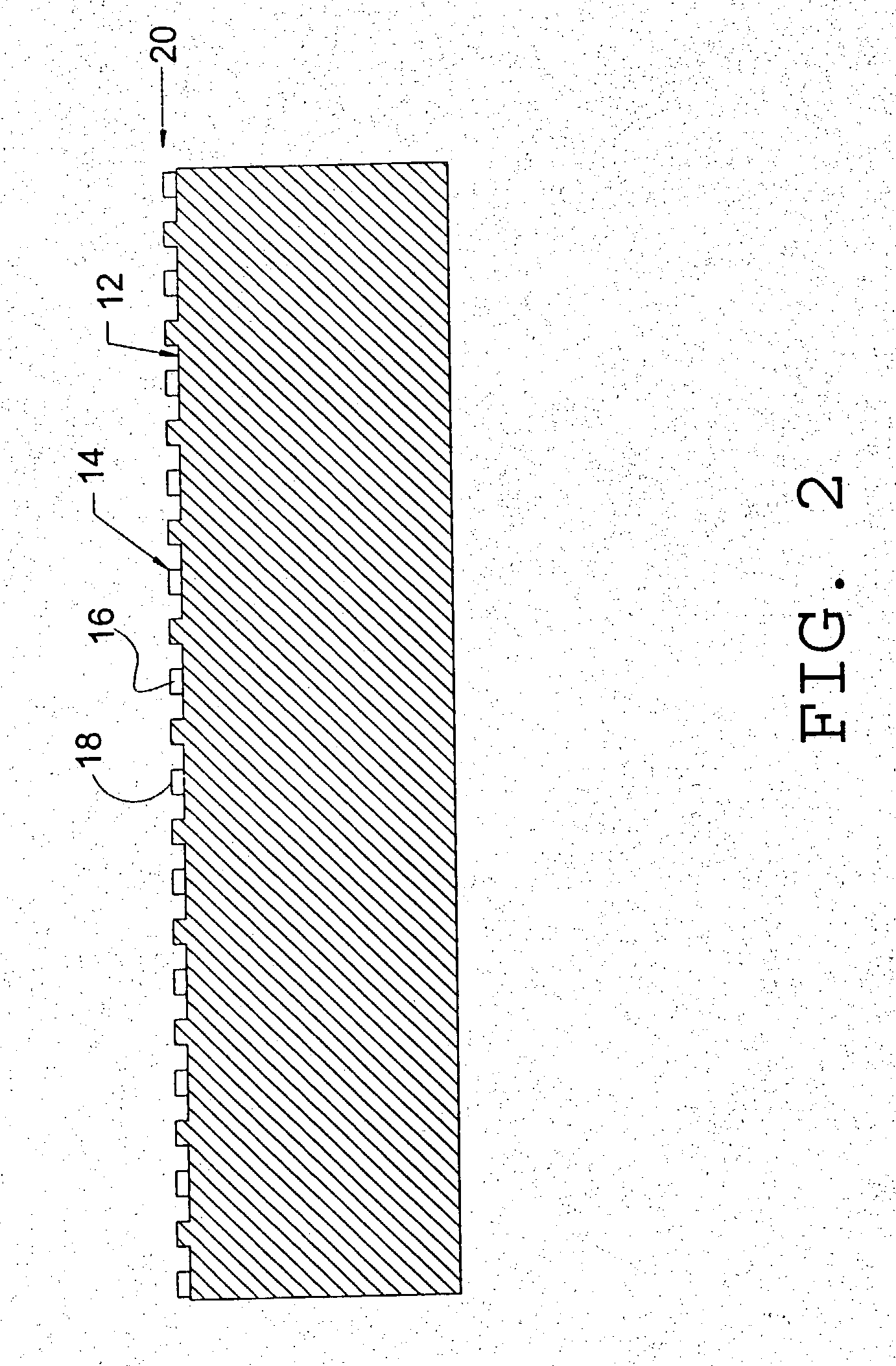Secure id badge construction utilizing inkjet printing
a technology of inkjet printing and badge construction, applied in the field can solve the problems of printing image distortion and/or destruction, damage to the second sheet and/or the first sheet, and difficulty in separating the first sheet from the second sheet after bonding, so as to improve the overall durability of image retaining laminate and reduce the overall difficulty of bonding. , the effect of sufficient abrasion resistan
- Summary
- Abstract
- Description
- Claims
- Application Information
AI Technical Summary
Benefits of technology
Problems solved by technology
Method used
Image
Examples
example 2
[0073] A piece of CONFIRM 1301 security laminate was embossed with a pattern. ("CONFIRM 1301" is a security laminate with an ethylene-acrylic acid adhesive, available from 3M Company of St. Paul, Minn., USA.) The pattern comprised a random arrangement of roughly hemispherical voids which were 25-30 micrometers deep and with diameters ranging from 50-85 micrometers, with most lying in the 70-80 micrometer range. The CONFIRM 1301 security laminate was pressed against an embossing tool, containing the inverse of the desired pattern in a compression molding press.
[0074] The embossing tool was comprised of SILASTIC J. (SILASTIC J is a silicone elastomer available from Dow Corning Co. of Midland, Mich., USA.) The press utilized was a Wabash model 20-122TM2WCB press from Wabash MPI of Wabash, Ind. The temperatures of the platens were 140.degree. C. A pressure of about 1.8 MPa was applied for about five minutes. The load was applied for an additional 5-10 minutes while the platens were cool...
example 3
[0079] A piece of CONFIRM 1301 security laminate was embossed with a pattern. The pattern comprised an arrangement of cylindrically shaped posts packed in a square array with a center-to-center spacing of 150 micrometers. The post diameter was 110 micrometers at its base and 92 micrometers at its top surface.
[0080] The CONFIRM 1301 security laminate was pressed against an embossing tool containing the inverse of the desired pattern in a compression molding press. The embossing tool was comprised of SILASTIC J. (SILASTIC J is a silicone elastomer available from Dow Corning Co. of Midland, Mich., USA.) The press utilized was a Wabash model 20-122TM2WCB press from Wabash MPI of Wabash, Ind. The temperatures of the platens were 140.degree. C. A pressure of about 1.8 MPa was applied for about five minutes. The load was applied for an additional 5-10 minutes while the platens were cooled to about 75.degree. C. The platens were then opened and the embossed film was removed from the embossi...
example 4
[0084] A piece of CONFIRM 1301 security laminate was embossed with a pattern. ("CONFIRM 1301" is a security laminate with an ethylene-acrylic acid adhesive, available from 3M Company of St. Paul, Minn., USA.) The pattern comprised an arrangement cylindrically shaped posts packed in a square array with a center-to-center spacing of 150 micrometers. The post diameter was 110 micrometers at its base and 92 micrometers at its top surface.
[0085] The CONFIRM 1301 security laminate was pressed against an embossing tool containing the inverse of the desired pattern in a compression molding press. The embossing tool was comprised of SILASTIC J. (SILASTIC J is a silicone elastomer available from Dow Corning Co. of Midland, Mich., USA.) The press utilized was a Wabash model 20-122TM2WCB press from Wabash MPI of Wabash, Ind. The temperatures of the platens were 140.degree. C. A pressure of about 1.8 MPa was applied for about five minutes. The load was applied for an additional 5-10 minutes whil...
PUM
| Property | Measurement | Unit |
|---|---|---|
| volume | aaaaa | aaaaa |
| volume | aaaaa | aaaaa |
| diameter | aaaaa | aaaaa |
Abstract
Description
Claims
Application Information
 Login to View More
Login to View More - R&D
- Intellectual Property
- Life Sciences
- Materials
- Tech Scout
- Unparalleled Data Quality
- Higher Quality Content
- 60% Fewer Hallucinations
Browse by: Latest US Patents, China's latest patents, Technical Efficacy Thesaurus, Application Domain, Technology Topic, Popular Technical Reports.
© 2025 PatSnap. All rights reserved.Legal|Privacy policy|Modern Slavery Act Transparency Statement|Sitemap|About US| Contact US: help@patsnap.com



